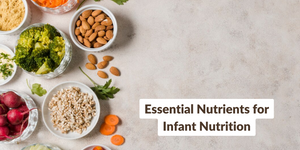Childhood is a critical time for physical growth, brain development, and fighting infections. Therefore, children must get a good amount of nutrients and energy from an early age. A balanced diet is the foundation of a healthy lifestyle and lowers the risk of health issues in later years.
Vegetables—an integral part of a balanced diet—are a rich source of carbohydrates, fibre, minerals, and vitamins. Here are some of the nutrients in vegetables:
- Vegetables like broccoli and spinach are rich sources of calcium, an essential mineral for healthy bones.
- Green leafy vegetables are also abundant in iron and folic acid (vitamin B9), which help the body produce healthy red blood cells.
- Vegetables containing starch, such as potatoes and sweet potatoes, provide a good amount of carbohydrates for energy.
- Green or deep yellow/orange vegetables such as carrots, tomatoes, sweet potatoes, and dark green leafy vegetables are packed with vitamin A, which is important for vision. Tomatoes also provide vitamin C. Vitamins are vital for a child’s developing immune system and several other bodily functions.
- Vegetables also provide fibre needed for healthy bowel function and special factors called antioxidants that protect against age-related diseases like cataracts, diabetes, heart disease, and cancer.
Tips to make your child eat vegetables
Kids should consume at least three servings of vegetables a day to get essential vitamins, minerals, and fibre for good health. As most parents know, getting children to eat vegetables can sometimes be a struggle. So, here are some tips to get your baby eating more vegetables:1. Take your baby vegetable shopping:
Allow your kid to choose the vegetables for the family. Choosing from rows of fresh vegetables may tempt your child to try a few.
2. Involve your child in cooking:
If your kid helps in cooking and serving a dish, he/she will be more curious to try it. Have your kid wash the vegetables. Show them how different vegetables are chopped and allow them to put the chopped vegetables on a plate.
3. Let your child eat with the family:
When you introduce solid foods, start with vegetables so that your child gets an early start in accepting the taste. If your child is trying a new vegetable, have everyone try the same vegetable. Seeing everyone eat vegetables will make it much more likely for your child to do the same.
4. Serve small portions:
Serving small amounts of vegetables with foods your child likes could make it less overwhelming.
5. Make vegetables taste good:
Instead of cooking vegetables the same way every time, try cooking them in new and creative ways that your child finds interesting. For example, instead of serving boiled vegetables, stir-fry them with fresh herbs, sprinkle sliced veggies on a pizza, or add pureed vegetables to soups or gravy.
6. Make the food look attractive:
Decorate the plate by shaping vegetables into funny shapes, like faces, flowers, fish, animals, or birds. Serve them with easy homemade dips like curd, hummus, or peanut butter, or sprinkled with cheese. Make fresh smoothies from vegetables and fruits.
7. Easy accessibility:
Instead of biscuits, chips, or cookies, try keeping chopped vegetables as snacks in a place that is easily accessible for your kid.
8. Be patient:
It’s okay if your child does not eat vegetables on the first try. Children usually take more than ten attempts before accepting any new food. Keep encouraging your kid, but avoid forcing them, as it may create negative feelings for that vegetable.
No single vegetable can provide all the nutrients; hence, it is important to include a variety of colourful vegetables on your kid’s plate. Buy locally available, fresh, and preferably seasonal vegetables for your family. While serving fresh vegetables, ensure that they are well cooked and cut the vegetables into small pieces to prevent your child from choking.
Keep the mealtime mood upbeat and wait patiently while your little one finds the veggies they like—or even love!






LEAVE A COMMENT